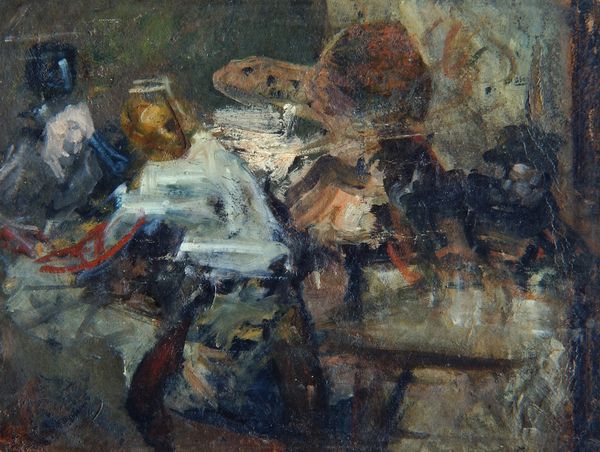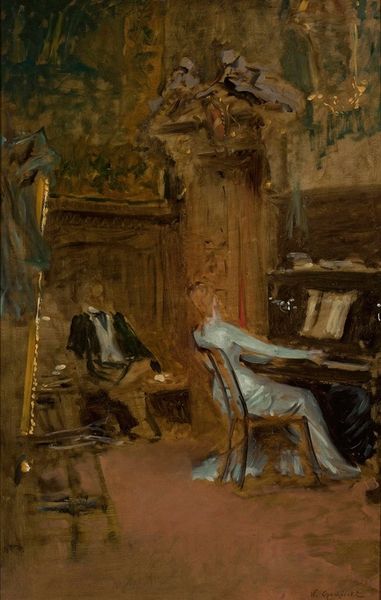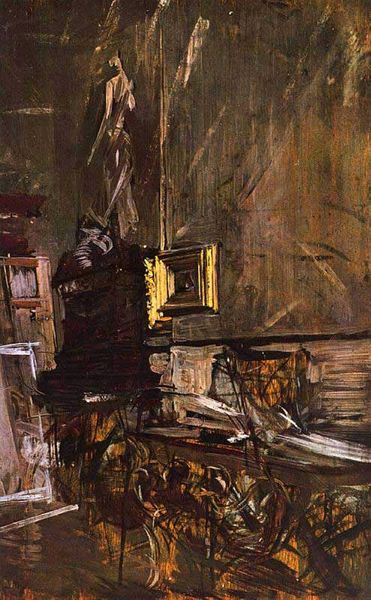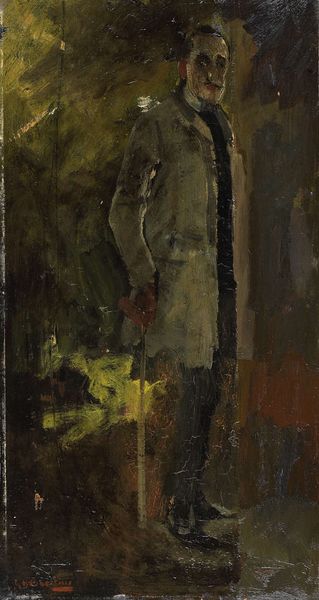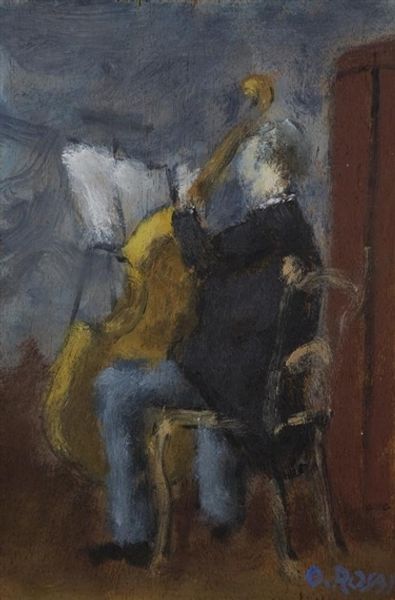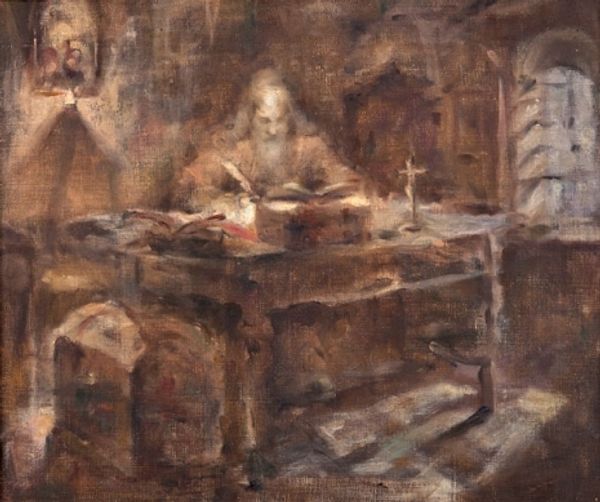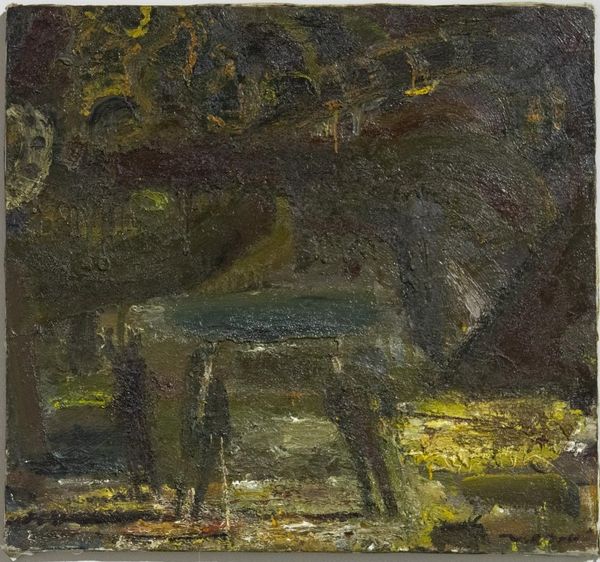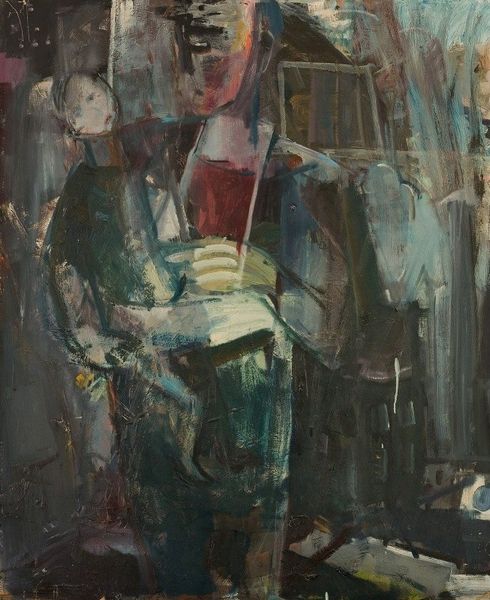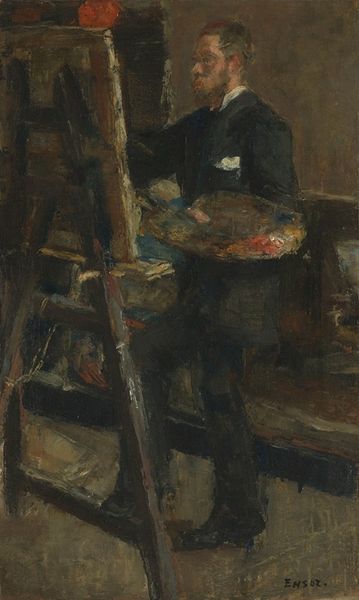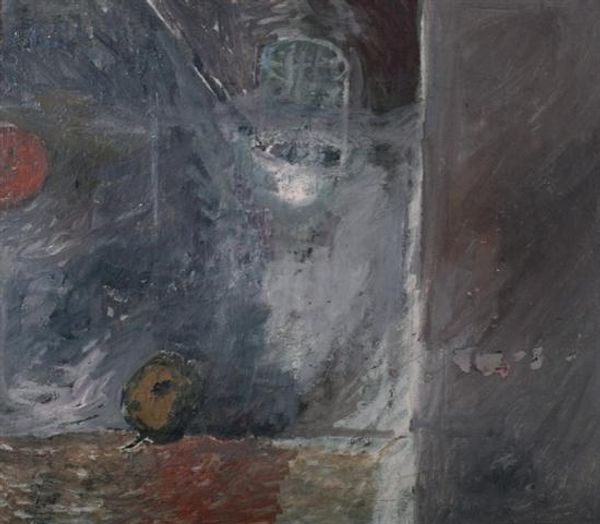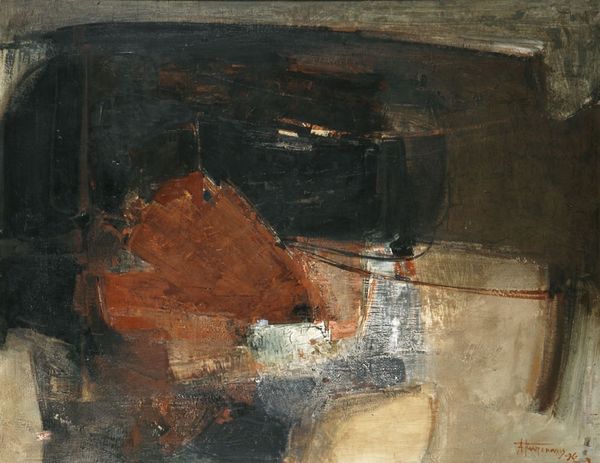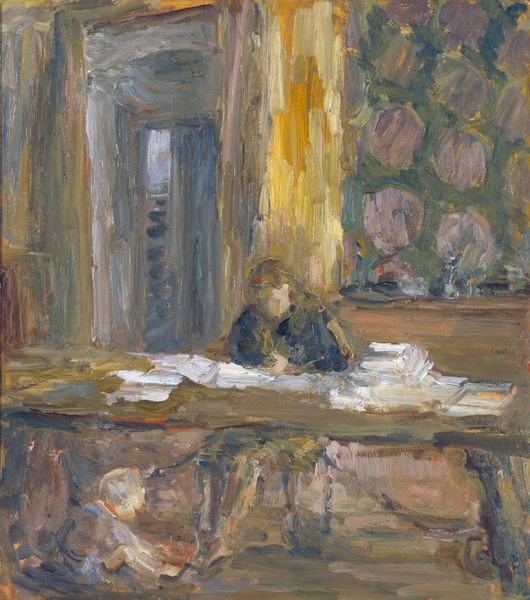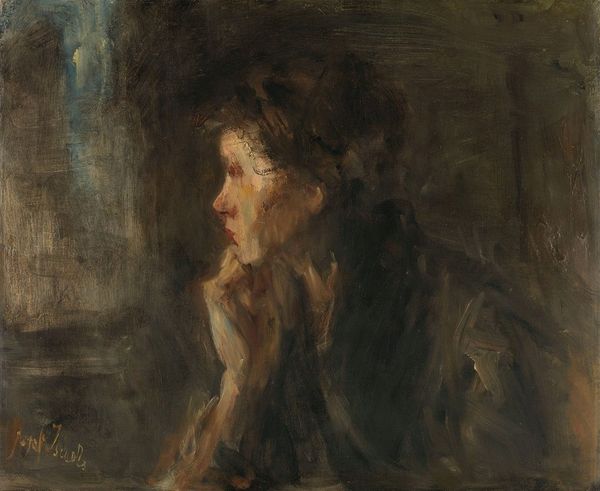
painting, oil-paint, impasto
#
portrait
#
painting
#
impressionism
#
oil-paint
#
oil painting
#
impasto
#
genre-painting
#
realism
Dimensions: height 51.5 cm, width 36 cm, depth 11 cm
Copyright: Rijks Museum: Open Domain
Curator: Here we have "Girl at the Piano," painted around 1889 by Jacob Maris. It hangs here at the Rijksmuseum. Editor: It’s evocative, isn’t it? At first glance, the low-key palette seems to absorb all the light. I feel the muffled sounds of the piano and the girl, withdrawn into herself in music's embrace. Curator: Maris was a key figure in the Hague School, and while he captured landscapes often, this one draws us into the quiet world of domesticity and inner life. The impasto technique, quite visible in person, is reminiscent of the impressionist style. How do you view its placement within the history of visual imagery? Editor: It reminds me of similar paintings by Whistler or Degas. There is that emphasis on atmosphere. Yet, to me, its hazy feeling seems less like documentation and more like a subjective echo of mood. Almost like remembering something half-forgotten, draped with emotional mist. Do you think this ‘impression’ carries symbolic weight? Curator: The piano itself, in art, has a long symbolic pedigree, associated with femininity, leisure, and refinement. A woman at a piano was shorthand for the culturally accomplished domestic sphere. What is particularly remarkable about Maris's take here is how he reduces it to this internalized psychological moment. The face is obscured and indistinct, directing the audience to seek out how memory imprints upon consciousness. Editor: That is something of a departure from common portraits. She becomes almost faceless—universal even. Perhaps the figure could represent anyone undergoing similar private immersion into creative activity. There's a real solitude present; in the artistic rendering of solitude and reflection, a very Dutch sensibility comes to light. Curator: Certainly, it connects to wider cultural scripts. It touches on societal roles and the gendering of space, domestic accomplishment, and the visual strategies around intimacy. Editor: Looking closely, I perceive almost photographic distortions, which anticipate Modernist approaches in interesting ways, and there’s a distinct tension. I mean, the work possesses incredible detail with the impressionistic blur which makes for such a potent, melancholy piece. Curator: It is precisely in that ambiguity where the painting gains so much traction still, prompting questions that resonate across centuries and artistic movements. Thank you for highlighting some fresh connections. Editor: A privilege!
Comments
No comments
Be the first to comment and join the conversation on the ultimate creative platform.
